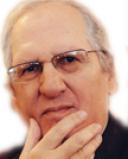Anger
Intermittent Explosive Disorder: No, This Is Not All About Mel "Mad Max" Gibson
Do domestic batterers and other violent offenders suffer from anger disorders?
Posted July 15, 2010 Reviewed by Ekua Hagan
Do domestic batterers and other violent offenders (and their victims) suffer from some type of anger disorder?
This posting is not about talented movie actor and gifted director Mel Gibson, the alleged notorious telephone tapes and lurid (as yet unproven) charges leveled against him by former girlfriend and mother of their eight-month-old daughter Oksana Grigorieva. Nor is it about the curious connection between creativity and evil. (See my previous post regarding Roman Polanski.) It is really about our runaway rage epidemic (a subject I've been writing on for 30 years) and what we can do to manage this menacing mental health crisis.
Anger disorders are pervasive in America, and slowly spreading to other countries. (See, for example, my prior post on violent events in China.) Pathological anger or rage can manifest in many ways, including chronic resentment, embitterment, hostility, hatred, temper tantrums, rage attacks, verbal and physical abuse, and sometimes even murder.
Most domestic violence is, in my view, related to an underlying anger disorder, often exacerbated and disinhibited by drugs and/or alcohol. One such classic anger disorder is known as Intermittent Explosive Disorder, and defined by the American Psychiatric Association as involving "several discrete episodes of failure to resist aggressive impulses that result in serious assaultive acts or destruction of property."
Such outbursts of rage and violence, more common but not exclusively occurring in males, are "grossly out of proportion to any precipitating psychosocial stressor," and tend to result in negative consequences not only for the unfortunate targets of these violent assaults but also for the easily enraged perpetrator him or herself.
According to one study by sociologist Ronald Kessler at Harvard Medical School, this particular anger disorder is on the rise and may be present in more than 15 million Americans. And this is only the proverbial tip of the iceberg. We Americans are in the midst of an anger epidemic that poses a very real and perilous public health threat.
The person suffering from IED, technically categorized as an impulse-control disorder, may describe these repeated rages as "seizures," "spells" or "attacks" which, very much like sexual orgasms, build up to an intolerable crescendo of tension and arousal, reach a point of no return, and are, at first, followed by pleasurable relaxation and relief.
But after the fact, the violent perpetrator may (though not always, which can indicate the possible presence of psychopathic narcissism) feel remorseful or ashamed of their bad behavior or evil deed. However, even in between these destructive and dangerous episodes, such individuals manifest subtler signs of an anger disorder: poor impulse control, hyperaggressiveness, irritability, hostility, embitterment and barely controlled rage expressed in somewhat less violent ways, like screaming, ranting, intimidating, threatening, throwing things, slamming doors or punching walls.
According to the DSM-IV-TR, patients exhibiting "narcissistic, obsessive, paranoid, or schizoid traits may be especially prone to having explosive outbursts of anger when under stress." I would say this is equally true of those with more severe forms of Antisocial or Borderline Personality Disorders.
And, as the current diagnostic manual makes quite clear, "Aggressive behavior may, of course, occur when no mental disorder is present. Purposeful behavior is distinguished from Intermittent Explosive Disorder by the presence of motivation and gain in the aggressive act. In forensic settings, individuals may malinger ... to avoid responsibility for their behavior. Anger as a normal reaction to specific life events or environmental situations also needs to be distinguished from the anger that may occur as part of an aggressive episode in Intermittent Explosive Disorder ... with little or no provocation." (pp. 666-667)
What is an anger disorder? What causes it? Anger disorders describe pathologically aggressive, violent or self-destructive patterns of behavior which, in my opinion, are symptomatic of and driven by an underlying and chronically repressed anger or rage. Anger disorders result primarily from the long-term mismanagement of anger, a process in which normal, existential anger turns insidiously over time into resentment, bitterness, hatred, and hair-trigger rage. Anger disorders may also be caused or exacerbated by psychosis, neurological impairment and substance abuse, all of which can impair one's ability to resist aggressive, angry or violent impulses.
Today, many patients suffering primarily from an underlying anger disorder are diagnosed, inappropriately in my opinion, with bipolar disorder, which is incorrectly considered by most (not all) psychiatrists and psychologists to be a genetically based biochemical imbalance best treated with medications rather than psychotherapy.
But, for the most part, anger disorders cannot be blamed on faulty neurology, defective genes, or bad biochemistry. They arise from a failure to recognize, fully acknowledge, and consciously address anger as it arises before it becomes pathological and doubly dangerous.
Typically, anger disorders are deeply rooted in childhood frustration, neglect, abandonment, or physical and emotional abuse. As regards anger, we suffer in our culture from a similar attitude as the Victorians took toward sexuality in Sigmund Freud's day. We are collectively taught that anger is something negative, improper, dangerous, unspiritual, useless, selfish, willful, vile, and evil. And hence, shameful. For many, anger is closely associated with fear, anxiety, guilt, and shame. Which is why we tend to repress or suppress it starting from childhood. And this negative attitude toward anger and resulting chronic repression is, paradoxically, the source of most anger problems in both children and adults.
Frustration, resentment, and anger are often generated by what Buddha called desire or attachment, which is the expectation that life will work out as we wish. Dr. Albert Ellis' Rational Emotive Behavior Therapy (REBT) similarly recognized the frustrating nature of irrational cognitions like "life should be fair." And anger can be and is often used by some (not unlike a drug) to cover up painful feelings, fear, anxiety, vulnerability, and shame.
Popular recovery counselor John Bradshaw refers to such bellicose individuals as "rageaholics." The best defense is a good offense. Certainly, much anger and resentment also stems from an underlying matrix of neurotic narcissism and grandiose sense of entitlement in adolescents and adults.
Narcissistic Personality Disorder, is defined by the DSM-IV-TR as "a pervasive pattern of grandiosity (in fantasy or behavior), need for admiration, and lack of empathy "and commonly includes a sense of entitlement, interpersonal exploitation, and preoccupation with fantasies of unlimited power, fame, brilliance, success, beauty or ideal love. For the narcissist, it's all about me, my needs, what I want, my ego gratification.
Such pathological narcissism and can be seen as a pervasive characterological defense compensating against profound feelings of inferiority, helplessness, sadness, and unlovability stemming from certain fundamental infantile and childhood needs having never been adequately met.
When this over-inflated persona is inevitably deflated by stressful life events like divorce, rejection, abandonment, failure, aging and loss, narcissistic rage is triggered, along with other long-buried emotions. The burning desire for revenge, retaliation, and the compulsive need to vengefully repay the hurt, slight, or insult no matter what it takes or costs is the central characteristic of narcissistic rage. These fiery, often overpowering emotional reactions can sometimes get so intense as to precipitate a major depressive, manic or even psychotic episode ("madness"), causing clinically significant temporary impairment of perception, rationality, judgment, and impulse control. In such extremely debilitating, disorienting, and dangerous states of mind, almost anything can happen. And often does.
Who is to blame for this problem? Well, in part, we all are. To the extent our society condemns and denigrates the effects of anger as negative, worthless, or evil, ignoring and denying its positive potentialities, we are partially responsible for the subsequent carnage.
To the extent mental health professionals continue to avoid confronting anger head-on in our patients, choosing instead to try to drug, behaviorally modify, or cognitively restructure the demon of anger away, we clinicians, too, are compounding the problem.
Whatever our own complicity in this evil on the part of society, psychology, and psychiatry, clearly the primary responsibility for violent behavior falls on the perpetrator's shoulders. No matter what his or her childhood circumstances or subsequent traumatic experiences, adults are responsible for how they deal with their own history and their negative feelings about that history. Not addressing an anger disorder by denying its existence or refusing professional assistance is no excuse for the consequences of not doing so.
What can be done to contain the rage epidemic? When it comes to dealing effectively with anger disorders, so-called "anger management" classes are no substitute for intensive psychotherapy. In psychotherapy, the single most powerful, healing and difficult intervention the clinician can offer is to listen to the angry patient and to acknowledge and accept his or her rage.
Anger and rage have to first be validated, expressed, tolerated and understood before the underlying effects or distorted cognitions can be constructively addressed. The dilemma is that most mental health professionals tend to dread, denigrate, and demonize anger, dismissing it as an inappropriate, destructive, negative and neurotic emotion. But anger is an appropriate, natural, normal and healthy response to frustration, injury, insult, and anything that threatens one's survival or psychological integrity. We need to be able to get angry at life's obstacles, challenges, and assaults. Anger can bestow necessary strength, courage, and tenacity in the face of adversity.
When we are socialized to view getting angry as negative, evil, immoral or unspiritual, as so many of us have been, we automatically repress our anger — as we repress other impulses or passions of which we are ashamed. This is exactly what Jung describes as the shadow and Rollo May described as the daimonic: those aspects of human experience we find unacceptable, reject, banish, and quarantine to unconsciousness. Anger is commonly experienced (if it is consciously experienced at all) as a shameful, frightening, negative emotion which must be hidden from others, and often, even from ourselves. The last thing therapists should do when working with angry patients is to further shame, criticize or punish them for feeling angry.
Bad behavior when furious is another matter, and must be firmly confronted. Evil deeds and destructiveness toward self or others cannot be condoned. These are neurotic forms of acting out, and function as a defense mechanism against fully experiencing that which underlies the anger or toward whom the anger is truly directed. Still, it is through first acknowledging, confronting, articulating and accepting the anger that the patient can become more conscious of what truly lies behind it, what drives and triggers it.
Anger is not something that can be avoided or circumvented during the psychotherapy process. Anger is the alchemical key to the healing process, the exclusion, suppression, or minimization of which impedes rather than promotes therapeutic progress. Without a courageous willingness to deal directly with the daimonic passions of anger or rage in treatment rather than trying merely to manage or defuse them cognitively, behaviorally, or pharmacologically, psychotherapists cannot facilitate the deep emotional healing such patients seek. Instead, we unwittingly contribute to the growing epidemic of anger, rage, hostility, bitterness and destructive behavior.
Dr. Diamond is the author of Anger, Madness, and the Daimonic: The Psychological Genesis of Violence, Evil, and Creativity.




